Explaining Project Management Methodologies in 2025: Project Managers’ Guide
While you might think there are only a few ways to manage projects, there are actually dozens of project management methodologies that can help a project manager get their team and projects successfully across the finish line. Here, we'll look at the most common project management methods and introduce a few you might never have heard of.
Every project manager must decide which project management methodologies they want to use to help get their projects from start to finish. Of course, there are the popular Kanban and Scrum methodologies that many project managers favor, but being popular doesn’t make them the right choice for every project.
Key Takeaways: Project Management Methods
- Different project management methodologies suit different management styles and projects, and it’s vital you choose the right one.
- Agile project methodology is ideal for projects that need flexibility and needs teams that can adapt to change often.
- The Waterfall project management methodology is ideal for teams and projects requiring a rigid structure.
- Most leading project management software platforms offer all the tools needed to implement the project management methodologies we discuss here.
Here, we’ll cover 11 project management methodologies that should be on your radar because, let’s face it, there is no one-size-fits-all strategy. The good news is that the software featured in our roundups of the best project management software and the best free project management software play nicely with these popular project management methodologies. This means you have plenty of great software options.
What Is a Project Management Methodology?
In short, a project management methodology is a set of processes, principles and tools that are used to plan, manage and track projects and tasks. Each methodology has the same common goal — to help get your team and its projects across the finish line — but each method has a slightly different way of doing things.
For example, the Lean methodology focuses on ways to cut waste and increase efficiency. The Six Sigma methodology helps teams focus on what’s not working and instills greater accountability around consistency and quality control, while the Waterfall methodology helps guide teams through a series of linear steps that lead to the end of the project.
It’s easy to hang on to more traditional project management methodologies like Kanban and Scrum, but there’s a whole world of project management styles that can help you become an even better project manager. The team at Cloudwards has used many of these methodologies and is comfortable with each of them, which is why we have put together this handy guide for you.
The Top 11 Most Common Project Management Methodologies
Many methodologies can be used to manage projects. Drawing from our experience, we have decided to round up and explain the most common project management methodologies to show you what they’re used for and how they can help you and your teams become more efficient.
- Waterfall — Easy to learn and provides a structured workflow
- Agile — Highly adaptable and flexible, teams can course correct quickly
- Scrum — Focuses on timed events in a structured environment
- Kanban — Provides teams with a clear overview of entire projects
- Scrumban — A kanban and scrum lovechild, great overviews and workflow
- Lean — Lets you trim the fat, improve efficiency and potentially cut costs
- PRINCE2 — Asks the who, what, when, where and why questions
- PMI PMBOK — Teachs about different methodologies and best practices
- Critical Path Method (CPM) — Structured methodology that guides the way
- Extreme Programming (XP) — An Agile method for small teams
- Six Sigma — A series of principles that can enhance other methodologies
We will explain each methodology in detail below to help you find the best practices for your project management.
1. Waterfall Methodology
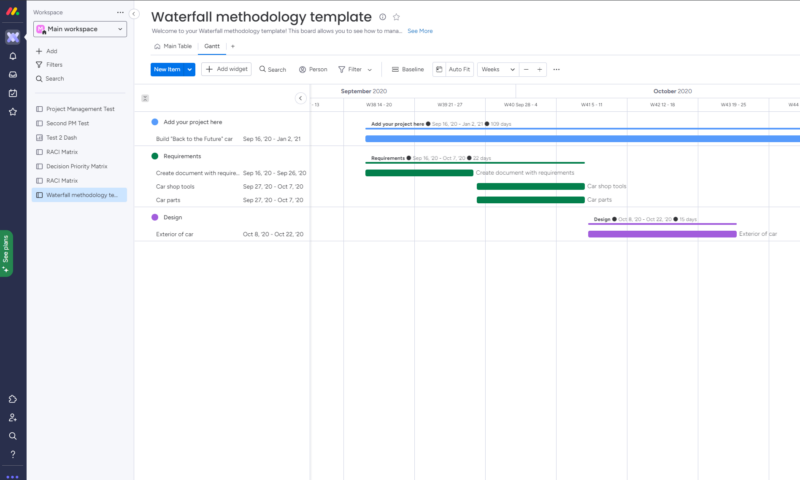
- Best used for: Software development, marketing and design teams
- Best software for Waterfall: monday.com, TeamGantt, Wrike
Pros:
- Uses clear project structures
- Easy to manage
- Strong project life cycle stability
Cons:
- Inflexible
- No room for revisions
- Delays testing
With its linear approach, the Waterfall project management method is one of the easiest to understand. The methodology, which relies on Gantt charts, is made up of multiple phases, with each phase containing numerous tasks. The phases are: setting requirements and document gathering, planning, development, testing, deployment and support.
In the Waterfall model, teams complete tasks in each phase. Once a task is complete, the team flows down the “waterfall” to the next task. Once all the tasks are finished, you move to the next phase. This method makes following a project’s path easy, but can create problems; after all, it’s hard to go back up a waterfall once you’ve gone down it.
If the projects you work on are clearly defined and the end goals don’t change, the Waterfall approach will work well. However, should you need to pivot to meet new needs or do testing throughout the project, the Waterfall method may hinder you with its inflexibility.
Many platforms, like monday.com (here’s our monday.com review), offer Waterfall methodology templates. You can give it a try to see if it works for you.
2. Agile Methodology
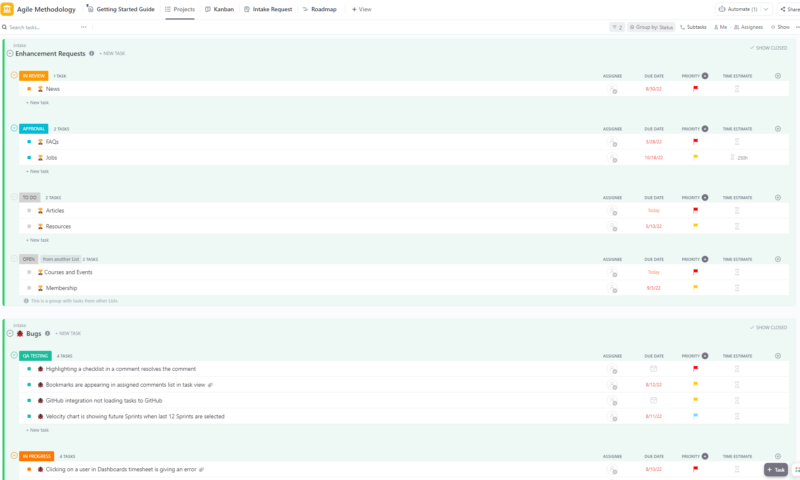
- Best used for: Software development, product development
- Best software for Agile: monday.com, Asana, ClickUp
Pros:
- Speed & flexibility
- Project visibility
- Promotes collaboration
Cons:
- Less predictable results
- Vague planning
- Can be cost-inefficient
To be clear, Agile isn’t a methodology; it’s a set of principles created by software developers who despised the restrictive Waterfall method. The Agile Manifesto is broken down into four Agile principles: individuals and interactions over processes and tools, working software over comprehensive project documentation, customer collaboration over contract negotiation, and responding to change by following a plan. If you’d like to learn more, check out our complete guide on Agile planning and what is Agile.
Agile project management methodology takes an iterative and collaborative approach that’s highly adaptable and can meet changing needs quickly. The Agile approach is favored by development teams who need to react to customer demands at a moment’s notice and perform testing throughout the project.
Working from a backlog of tasks and collaborating with stakeholders instead of relying on documentation allows project teams to work quickly, but it comes at a cost. Because the end goal is constantly changing, results can be less predictable, and continually altering work that has already been done can be costly. Find out which platforms we recommend for Agile teams in our roundup of the best Agile tools.
3. Scrum Method
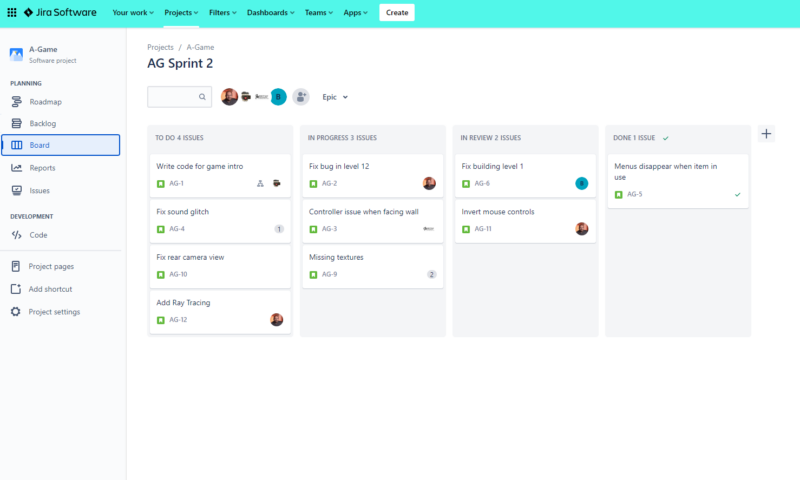
- Best used for: Software development, logistics, healthcare
- Best software for Scrum: Jira, Trello, Asana
Pros:
- Makes teams highly efficient
- Quickly breaks down big projects
- Scrum meetings provide project visibility
Cons:
- Not suitable for large teams
- Daily meetings can be bothersome
- Lack of commitment can be detrimental
The Scrum methodology is born from the Agile movement, read our Scrum vs Agile guide. It enables teams to self-manage by introducing a Scrum framework that improves communication, task execution speed and collaboration. Scrum is usually used for software development, but it can also be used for various projects in other industries, including event planning, logistics, healthcare, marketing and more. Learn more in the Scrum history guide.
Scrum uses short work periods (roughly two weeks) called “sprints.” Sprints contain tasks that get pulled from a backlog. A small team of nine attends daily meetings called “scrums,” which a scrum master holds. Each team member shares how their task is progressing. At the end of the sprint, a final retrospective meeting is held to discuss how the sprint went. You then repeat until project completion.
The Scrum methodology works best with small teams that are fully committed to the Scrum process, who can pivot and change course mid-way through a project and focus on time frames rather than the project as a whole. A lack of commitment to avoid scrum anti-patterns from any team member can be devastating, so make sure everyone is on board. Need help figuring out what software to use? Check out our list of the best Scrum software.
4. Kanban Method
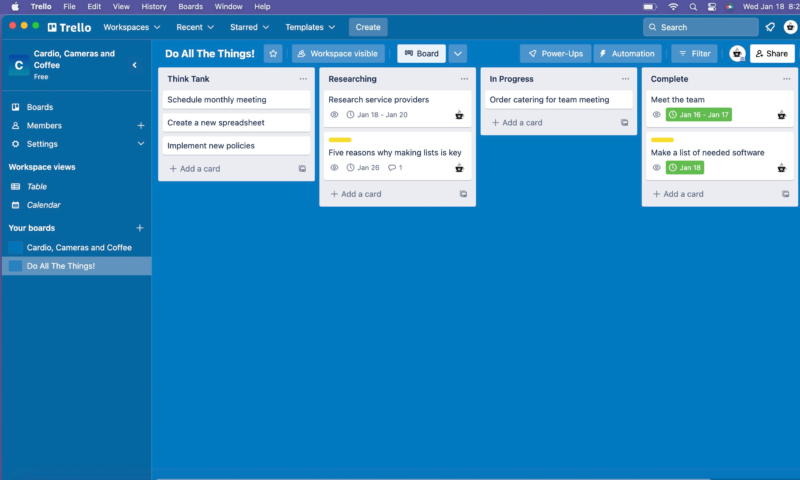
- Best used for: Production, editorial and creative work, human resources
- Best software for Kanban: Trello, Wrike, monday.com
Pros:
- Easy to visualize work
- Overall ease of use
- Can help reduce waste
Cons:
- Poor for dynamic projects
- No timed phases
- Needs timely updates to remain effective
Kanban, which roughly translates from Japanese to “sign you can see,” was developed by Taiichi Ohno and became popular after it was used to cut waste and make the Toyota production system more efficient. Like Scrum, Kanban uses an Agile project management framework. Kanban is simple and effective, and provides team members with a global view of an entire project.
Kanban methodology uses columns for project phases and cards that represent tasks. Users move task cards from left to right through various project stages (like to-do, in progress and done) to document project progress. Kanban is also suitable for implementing work in progress (WIP) limits that dictate how many cards can be in one column, which can prevent teams from becoming overworked.
Kanban’s flexibility and support for many workflows and large teams make it popular. However, there are downsides. The Kanban method makes it hard to plan ahead. Complex tasks with subtasks or dependencies are not easy to manage, and each project phase has no timeline associated with it, which can cause delays. You can learn more by reading our Kanban guide. Also, check out our roundup of the best Kanban apps.
5. Scrumban Method
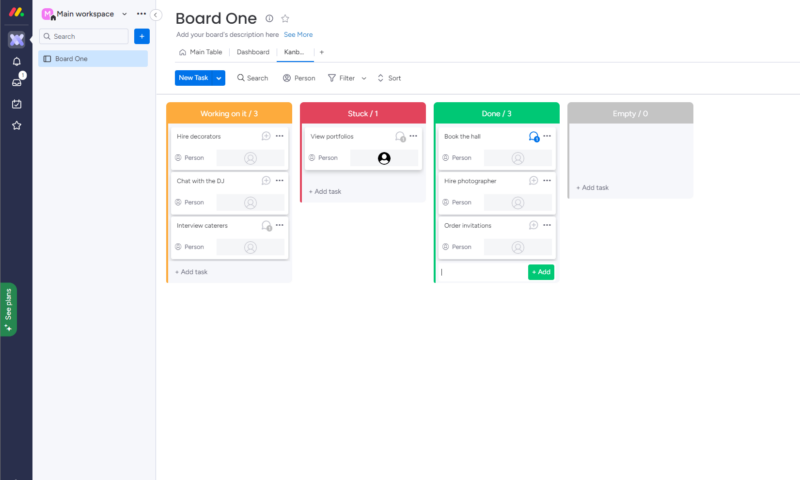
- Best used for: Maintenance and construction, marketing, digital agencies
- Best software for scrumban: Jira, Trello, monday.com
Pros:
- Promotes independence & autonomy
- Can reduce bottlenecks
- Ideal for large projects
Cons:
- Without meetings, large projects can be unwieldy
- No velocity tracking
- Relatively new & untested
Scrumban is one of the other project management methodologies managers should know about. As the name suggests, Scrumban is a hybrid project management methodology that mixes elements of Scrum and Kanban. This mixture removes some of Scrum’s rigidity and injects Kanban’s free-flowing nature into one easy-to-use system.
A Scrumban board has three columns: to-do, work in progress and done. Scrumban follows scrum’s workflow, but instead of tasks being assigned from a backlog, individuals take tasks from the to-do column as needed. Daily scrums and retrospective meetings are held as needed. Keep in mind that without daily scrums and proper focus on time, large projects could become problematic.
You can look at Scrumban two ways. Either Kanban makes Scrum more flexible and adaptable, or Scrum adds more rigidity and structure to Kanban. Either way, you’re left with a methodology that effectively mixes two of the most popular project management styles. With Scrumban being so new, the methodology is largely untested, so your mileage may vary.
6. Lean Methodology
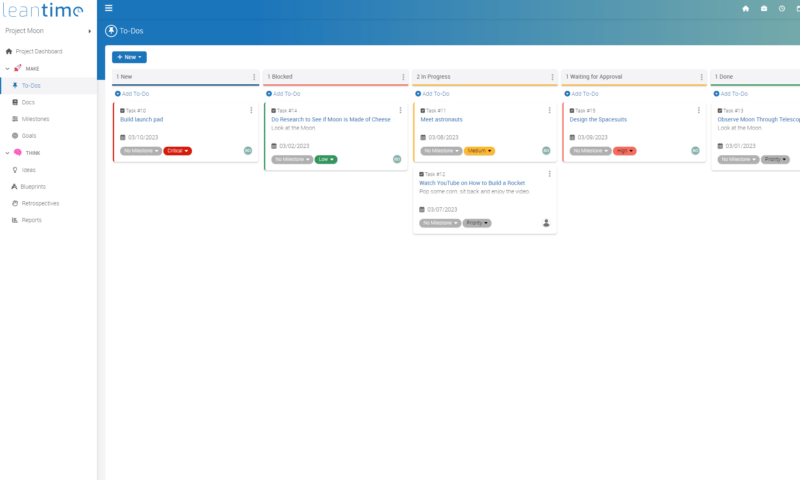
- Best used for: creative industries, manufacturing, construction
- Best software for lean methodology: Leantime, monday.com
Pros:
- Eliminates waste
- Promotes efficiency
- Easy to implement
Cons:
- Little room for error
The Lean method was also made famous by Toyota. Once implemented, Toyota became incredibly efficient and saw huge gains in its manufacturing process. Lean is governed by the three M’s: muda (wastefulness), mura (unevenness) and muri (overburden). It is used by companies in the manufacturing space. It has proved effective at cutting down on waste and increasing efficiency.
Kanban boards are used with the Lean method because of the overviews they provide. Managers can quickly see wasteful tasks (muda), where tasks are backed up (mura) and can see if a project phase is overrun with work (muri). Users of Lean need to be careful, though, as too many cuts in the pursuit of not being wasteful will leave managers with little room for error.
Lean project management is perfect for those who want to strip the fat out of their workflows and save money by cutting tasks that aren’t needed. If you want to get your workflows in tip-top shape, Lean project management could be for you. After using Leantime, we found that it’s ideal for this methodology. Be sure to read our Leantime review.
7. PRINCE2 Method
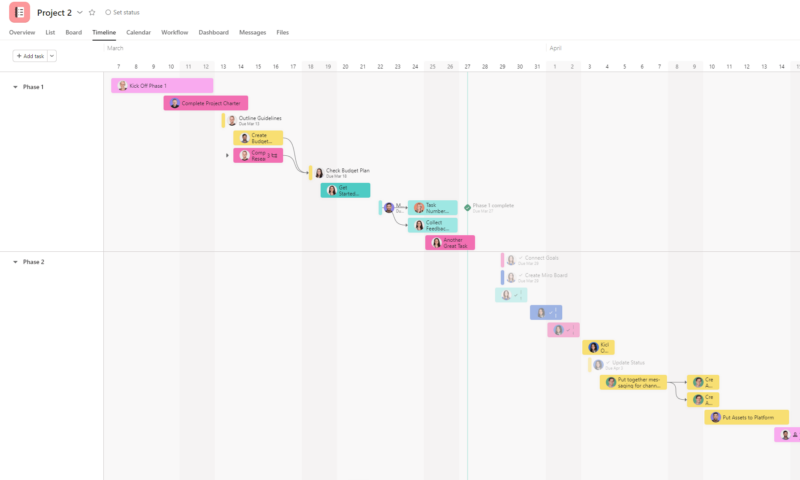
- Best used for: Software development, enterprise projects
- Best software for PRINCE2: monday.com, Asana, ClickUp
PRINCE2, which stands for PRojects IN Controlled Environments, is a structured project management methodology that requires certification. PRINCE2 is based on Waterfall (linear) and Agile methodologies, which makes it one of the more unique types of project management. It uses a mixture of tools, from Gantt charts, to lists, to kanban boards.
PRINCE2 has seven high-level principles that dictate seven project management principles; six phases comprise each project. Each phase has defined inputs and outputs so that no stone is left unturned, and each project has its own governance. A project board owns the project, while a project manager is responsible for running the project.
The PRINCE2 method is used to ensure a project has solid business reasons. The methodology determines how viable a project is, what will be delivered, when it will be delivered, project costs and risks, and who will be in specific roles. As you can imagine, PRINCE2 is unsuitable for small projects, but large, complex projects could benefit from the structure.
If you’d like to find out more about PRINCE2, check out our beginner’s guide on what is PRINCE2, as well as our PRINCE2 vs Agile guide.
8. PMI PMBOK Method
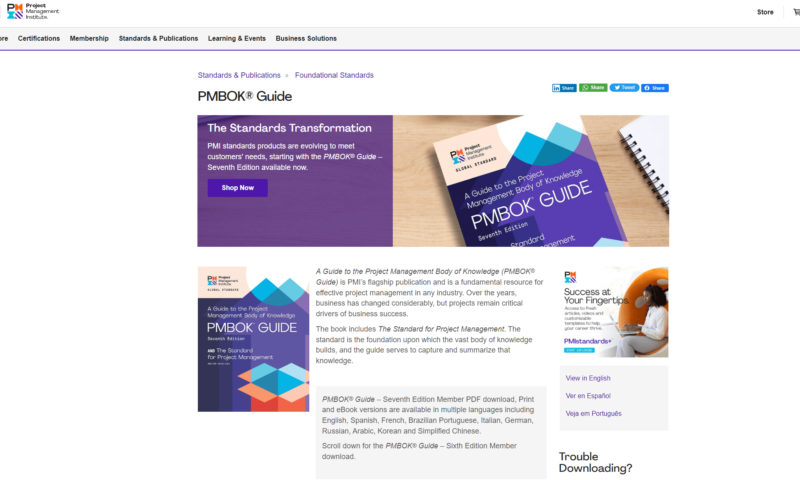
- Best used for: Learning about project management
- Best software for PMI PMBOK: Whatever platform suits your needs best
Pros:
- Increases PM knowledge
- Gain certification from PMI
- Increase PM skills
Cons:
- Studying, lots & lots of studying
PMI PMBOK isn’t a methodology like Waterfall or Lean; it is a book from the Project Management Institute that contains best practices, processes and terminology for project managers. PMBOK, which stands for “Project Management Body of Knowledge,” is required reading for those who want to obtain PMP certification from the PMI.
If you’re a project manager who strives for continuous improvement, the PMI PMBOK could be for you. You’ll learn about the five stages of projects (conception and initiation, planning, execution, performance and monitoring, and closing), as well as various project management methodologies, such as Agile, adaptive and hybrid. You’ll also learn how to tailor different approaches to your work environment so that you can be more efficient.
Once you complete the course and become certified, you’ll better understand different methodologies and how they can help your projects thrive. PMI PMBOK leaves it up to each manager to choose project management software and tools. Head to our project management software reviews and roundups for some recommendations.
9. Critical Path Method (CPM)
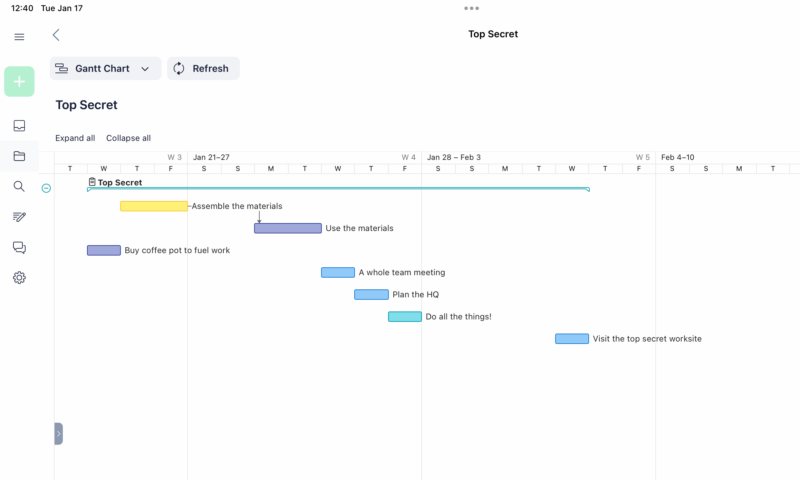
- Best used for: Product and software development, construction, engineering
- Best software for the critical path method: Zoho Projects, nTask, Wrike
Pros:
- Precise project planning
- See entire project life cycles
- Enhances team discussions
Cons:
- Hard to add changes
- It’s a resource hog
- Not easy to implement
Critical path methodology, designed in the 1950s by Morgan R. Walker of DuPont, makes managers model every part of a project from the ground up before work starts. This method helps make projects predictable and ensures every team member knows what’s expected of them. However, it’s not the easiest method to implement and has a steep learning curve.
Every task, dependency and milestone for a project is planned. Managers also factor in tasks that cannot start until other tasks have been finished. With this information, a manager can see every phase of a project and every task within a phase, which they can use to build a “critical path” through the tasks and set them to a timeline that gives an estimated completion date.
CPM — which should not be confused with critical chain project management (CCPM) — is ideal for teams who like using Gantt charts and those who work on complex projects with hard deadlines. CPM, which is also called “critical path analysis,” is not for teams needing flexibility. Platforms like Wrike (see our Wrike review) and nTask (here’s our nTask review) are ideal for CPM.
10. Extreme Programming (XP)
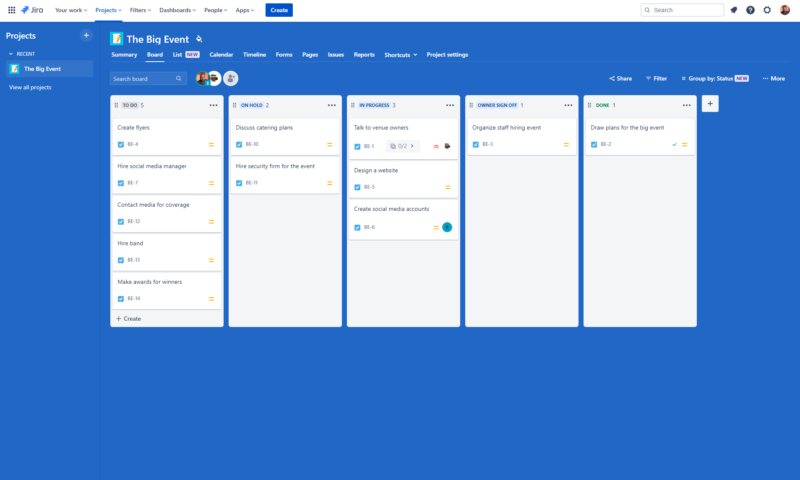
Pros:
- Incredibly fluid workflow
- Teams are self-managing
- Allows fast direction changes
Cons:
- Lack of formal plans can cause issues
- Not for big or remote teams
- Lack of hard timelines can cause delays
Next on our list of project management methodologies is something called Extreme Programming (XP), an Agile method designed exclusively for software development projects. XP is based on five core values: simplicity, communication, feedback, respect and courage. There are some rules that teams need to follow, too, for the method to work as intended.
XP, which is similar to Scrum, focuses on short development cycles and multiple software releases so that testing can happen continuously. Teams prioritize and pull tasks from user stories, constantly communicate with project stakeholders and work on tasks until completion. Work is then released and feedback is received.
Any changes requested are then implemented. You repeat until the project is finished.
Due to its fluid nature and the need for constant face-to-face communication, XP is only suitable for small, close-knit teams who can adapt to continuous change. XP can have many pitfalls due to the lack of documentation and timelines, but it can help produce excellent results when used correctly.
We have a separate guide on extreme project management (XPM), if you want to read up on that.
11. Six Sigma Method
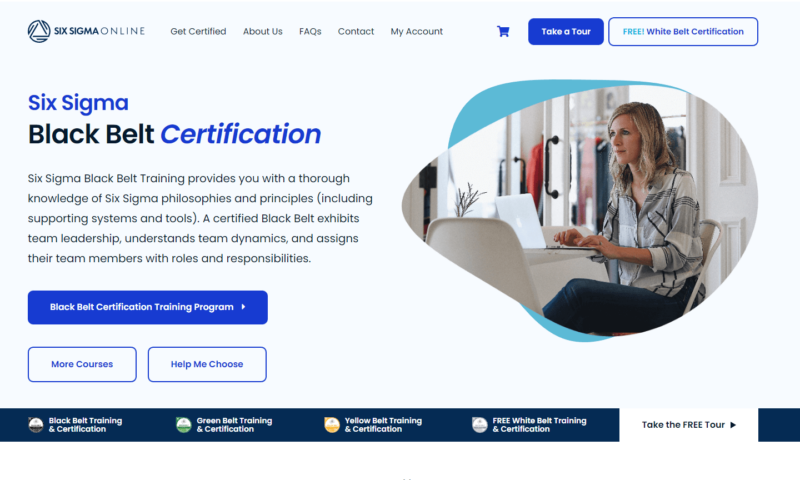
- Best used for: manufacturing, healthcare, IT
- Best software for Six Sigma: Leantime, Asana, monday.com
Pros:
- Ensures high-quality work
- Improves customer support
- Helps reduce risk
- Increases predictability
Cons:
- Makes large amounts of data
- Can be time-consuming
- Can increase operating costs
Six Sigma is a set of processes and tools that aim to improve work quality via statistical analysis. By focusing on what’s not working, errors can be reduced, efficiency can be increased and outcomes can be more predictable.
If Six Sigma sounds complicated, it’s because it is. In fact, Six Sigma cannot be practiced without a Six Sigma project management certification, including the white, yellow, green and black Six Sigma belt levels.
Six Sigma has several variations, including lean Six Sigma and Agile Six Sigma. No matter which flavor you choose, the goal is the same: to use Six Sigma methods to improve processes (DMAIC, or define, measure, analyze, improve and control) or create new ones (DMADV, or define, measure, analyze, design and verify), that suit you, your team and your project.
Six Sigma can be used with many other methodologies, like Waterfall, Agile and Lean, and can be used in any type of organization or setting. Just make sure you have the time and money to implement the system, and understand it’s not a set of tools to improve project and task management, but it’s meant to improve processes.
Why Are Project Management Methodologies Important?
Our experiences have taught us that understanding many project management methodologies is essential to better overall management because every project you work on differs and may require your team to take a different approach. Additionally, each team is unique and may have project management skills that suit one method over another.
How to Choose the Best Project Management Methodology for Your Team or Project
Picking the right project management methodology for your project teams is crucial. As mentioned above, you cannot use one approach for every project because each project brings unique challenges. Some projects may need structure to ensure all tasks are completed on time, while others may require your team to take a more flexible approach to work (check out our guide on the best multi project management).
As a leader, you must determine if your current project needs structure (Waterfall), flexibility (Agile), hyper-efficiency to limit waste and cut costs (Lean) or a little bit of everything (hybrid). The best way to do this is to communicate with your client to see what they need from you and your team. From there, you can make a sound decision.
Most project management suites, like monday.com, ClickUp (here’s our ClickUp review) and Asana (here’s our Asana review), are flexible and provide tools for most methodologies. Meanwhile, platforms like Trello (here’s our Trello review) and TeamGantt (here’s our TeamGantt review) offer a more focused approach. All you need to do is pick a platform that works for your team and you’re ready to go.
Final Thoughts: Project Management Methodology
There are many ways to approach projects. You could use an Agile framework, opt for Waterfall projects or even use a hybrid methodology, depending on the project. It’s important to know about different project methodologies so that you and your team can work through projects efficiently, get project deliverables to your client on time and enjoy project success.
If you only take away a few things from this guide, understand that there is no one-size-fits-all methodology and that each project should be treated with the respect it deserves by choosing the correct methodology for the job.
There are other methods too, such as event chain methodology, which helps you plan for risks and events that could impact your project, and the Kaizen method, which promotes small changes for the better. Plus, check out our guide on Opportunity Canvas, a tool that helps teams identify key elements of a project.
We hope this look at project management approaches has opened your eyes and that you enjoy future project success. As always, thank you for reading.
FAQ
Project management methodologies are guidelines and values that help project managers and teams plan, execute and manage projects and tasks.
Agile project methodology is an approach to project management that favors an iterative, highly flexible approach to working. Agile suits teams who need to pivot and change direction quickly.
The six major project management methodologies are Waterfall, Agile, Scrum, Lean, Critical Path, Six Sigma and PRINCE2.
When managing a project, you must remember that your chosen methodology should allow you to initiate, plan, execute, monitor and close out projects successfully.


